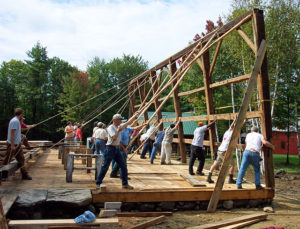This fall I logged over 1,000 miles traveling to towns in western Montana to talk about community, on behalf of the Headwaters Health Foundation, which sought to engage communities in the design of their strategic plan.
At each meeting, we asked participants – healthcare and mental health professionals, educators, local government and nonprofit organizations – to describe the strengths their community brings to tackling challenges. These strengths included a history of working well together, having local organizations with the vision and capacity to lead change, and local projects that make a difference.
What emerged from each of these conversations was a community narrative, a story that residents told one another about how they come together (or not) to meet the needs of their neighbors. The stories varied as much as the geography and economies of each western town.
- “We help with the hay,” is the way one person described the interdependence of an agricultural county, separated by a mountain range. Others nodded in agreement.
- “If there’s a child in need, someone steps up to help,” said someone from a wealthy urban center, describing the generosity of their town.
- Another community talked about a rift – based on history, race and income – that is “the hidden elephant in the room whenever we try to get things done.”
How each community perceives itself brings to mind a blog I wrote on the dominant storylines of America. One storyline is that of the “Benevolent Community” – of neighbors and friends rolling up their sleeves to pitch in for the common good. Another storyline is the “Mob at the Gate”, in which people are afraid that others “want what we have” and there is an impulse to fend off perceived threats.
In each western Montana community, the stories people tell – of good times and bad times – reveal how the community views their potential for collaboration. The Harwood Institute emphasizes the importance of exploring community readiness when considering local change efforts. They identify five stages of community readiness: the waiting place, impasse, catalytic, growth, and sustain/renew. Knowing where the community is in this continuum – based on dominant narratives – is critical to any change effort.
Equipped with that self-knowledge, a community can intentionally change or advance their community narrative. One of my favorite examples of this is Louisville, Kentucky, which in 2011 pledged to become a more caring city. The mayor, prominent churches, and business, school and community leaders launched Partnership for a Compassionate Louisville.
Louisville has adopted values such as Hospitality: We will welcome guests in the name of compassion; Abundance: What we have is enough if we share and if we allow it to flow; and Awareness and Understanding: We strive to keep compassion in our daily thoughts and practice. These values are integrated into key institutions in the community, including school curriculum, medical school studies and the jail system. Louisville is now an international model City of Compassion.
How can communities begin to enhance or even reimagine their community narrative? It begins with self-knowledge, an awareness of how residents live, work and play in the community. This self-knowledge is best gained by “getting people talking”. The Harwood Institute has several helpful tools to assist communities in this exploration, and suggests three simple questions to start a discussion:
What are the aspirations in your community? What challenges do we face in reaching these aspirations? What needs to change to reach our aspirations?
Recognizing that all of our efforts are ultimately human endeavors, taking the time to invest in one another may be the greatest gift we can bring to this evolving world.

